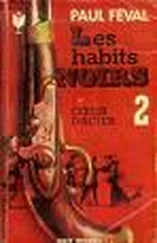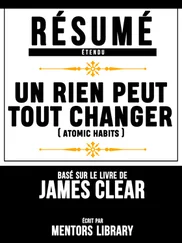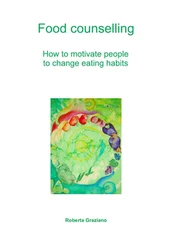The ophthalmologist said my eye would gradually slide back into place as the air seeped out, but it was hard to tell how long this would take. I was scheduled for surgery one week later, which would allow me some additional time to heal. I looked like I had been on the wrong end of a boxing match, but I was cleared to leave the hospital. I returned home with a broken nose, half a dozen facial fractures, and a bulging left eye.
The following months were hard. It felt like everything in my life was on pause. I had double vision for weeks; I literally couldn’t see straight. It took more than a month, but my eyeball did eventually return to its normal location. Between the seizures and my vision problems, it was eight months before I could drive a car again. At physical therapy, I practiced basic motor patterns like walking in a straight line. I was determined not to let my injury get me down, but there were more than a few moments when I felt depressed and overwhelmed.
I became painfully aware of how far I had to go when I returned to the baseball field one year later. Baseball had always been a major part of my life. My dad had played minor league baseball for the St. Louis Cardinals, and I had a dream of playing professionally, too. After months of rehabilitation, what I wanted more than anything was to get back on the field.
But my return to baseball was not smooth. When the season rolled around, I was the only junior to be cut from the varsity baseball team. I was sent down to play with the sophomores on junior varsity. I had been playing since age four, and for someone who had spent so much time and effort on the sport, getting cut was humiliating. I vividly remember the day it happened. I sat in my car and cried as I flipped through the radio, desperately searching for a song that would make me feel better.
After a year of self-doubt, I managed to make the varsity team as a senior, but I rarely made it on the field. In total, I played eleven innings of high school varsity baseball, barely more than a single game.
Despite my lackluster high school career, I still believed I could become a great player. And I knew that if things were going to improve, I was the one responsible for making it happen. The turning point came two years after my injury, when I began college at Denison University. It was a new beginning, and it was the place where I would discover the surprising power of small habits for the first time.
HOW I LEARNED ABOUT HABITS
Attending Denison was one of the best decisions of my life. I earned a spot on the baseball team and, although I was at the bottom of the roster as a freshman, I was thrilled. Despite the chaos of my high school years, I had managed to become a college athlete.
I wasn’t going to be starting on the baseball team anytime soon, so I focused on getting my life in order. While my peers stayed up late and played video games, I built good sleep habits and went to bed early each night. In the messy world of a college dorm, I made a point to keep my room neat and tidy. These improvements were minor, but they gave me a sense of control over my life. I started to feel confident again. And this growing belief in myself rippled into the classroom as I improved my study habits and managed to earn straight A’s during my first year.
A habit is a routine or behavior that is performed regularly—and, in many cases, automatically. As each semester passed, I accumulated small but consistent habits that ultimately led to results that were unimaginable to me when I started. For example, for the first time in my life, I made it a habit to lift weights multiple times per week, and in the years that followed, my six-foot-four-inch frame bulked up from a featherweight 170 to a lean 200 pounds.
When my sophomore season arrived, I earned a starting role on the pitching staff. By my junior year, I was voted team captain and at the end of the season, I was selected for the all-conference team. But it was not until my senior season that my sleep habits, study habits, and strength-training habits really began to pay off.
Six years after I had been hit in the face with a baseball bat, flown to the hospital, and placed into a coma, I was selected as the top male athlete at Denison University and named to the ESPN Academic All-America Team—an honor given to just thirty-three players across the country. By the time I graduated, I was listed in the school record books in eight different categories. That same year, I was awarded the university’s highest academic honor, the President’s Medal.
I hope you’ll forgive me if this sounds boastful. To be honest, there was nothing legendary or historic about my athletic career. I never ended up playing professionally. However, looking back on those years, I believe I accomplished something just as rare: I fulfilled my potential. And I believe the concepts in this book can help you fulfill your potential as well.
We all face challenges in life. This injury was one of mine, and the experience taught me a critical lesson: changes that seem small and unimportant at first will compound into remarkable results if you’re willing to stick with them for years. We all deal with setbacks but in the long run, the quality of our lives often depends on the quality of our habits. With the same habits, you’ll end up with the same results. But with better habits, anything is possible.
Maybe there are people who can achieve incredible success overnight. I don’t know any of them, and I’m certainly not one of them. There wasn’t one defining moment on my journey from medically induced coma to Academic All-American; there were many. It was a gradual evolution, a long series of small wins and tiny breakthroughs. The only way I made progress—the only choice I had—was to start small. And I employed this same strategy a few years later when I started my own business and began working on this book.
HOW AND WHY I WROTE THIS BOOK
In November 2012, I began publishing articles at jamesclear.com. For years, I had been keeping notes about my personal experiments with habits and I was finally ready to share some of them publicly. I began by publishing a new article every Monday and Thursday. Within a few months, this simple writing habit led to my first one thousand email subscribers, and by the end of 2013 that number had grown to more than thirty thousand people.
In 2014, my email list expanded to over one hundred thousand subscribers, which made it one of the fastest-growing newsletters on the internet. I had felt like an impostor when I began writing two years earlier, but now I was becoming known as an expert on habits—a new label that excited me but also felt uncomfortable. I had never considered myself a master of the topic, but rather someone who was experimenting alongside my readers.
In 2015, I reached two hundred thousand email subscribers and signed a book deal with Penguin Random House to begin writing the book you are reading now. As my audience grew, so did my business opportunities. I was increasingly asked to speak at top companies about the science of habit formation, behavior change, and continuous improvement. I found myself delivering keynote speeches at conferences in the United States and Europe.
In 2016, my articles began to appear regularly in major publications like Time , Entrepreneur , and Forbes . Incredibly, my writing was read by over eight million people that year. Coaches in the NFL, NBA, and MLB began reading my work and sharing it with their teams.
At the start of 2017, I launched the Habits Academy, which became the premier training platform for organizations and individuals interested in building better habits in life and work.* Fortune 500 companies and growing start-ups began to enroll their leaders and train their staff. In total, over ten thousand leaders, managers, coaches, and teachers have graduated from the Habits Academy, and my work with them has taught me an incredible amount about what it takes to make habits work in the real world.
Читать дальше




![Джеймс Клир - Атомные привычки [Как приобрести хорошие привычки и избавиться от плохих]](/books/403243/dzhejms-klir-atomnye-privychki-kak-priobresti-horosh-thumb.webp)



